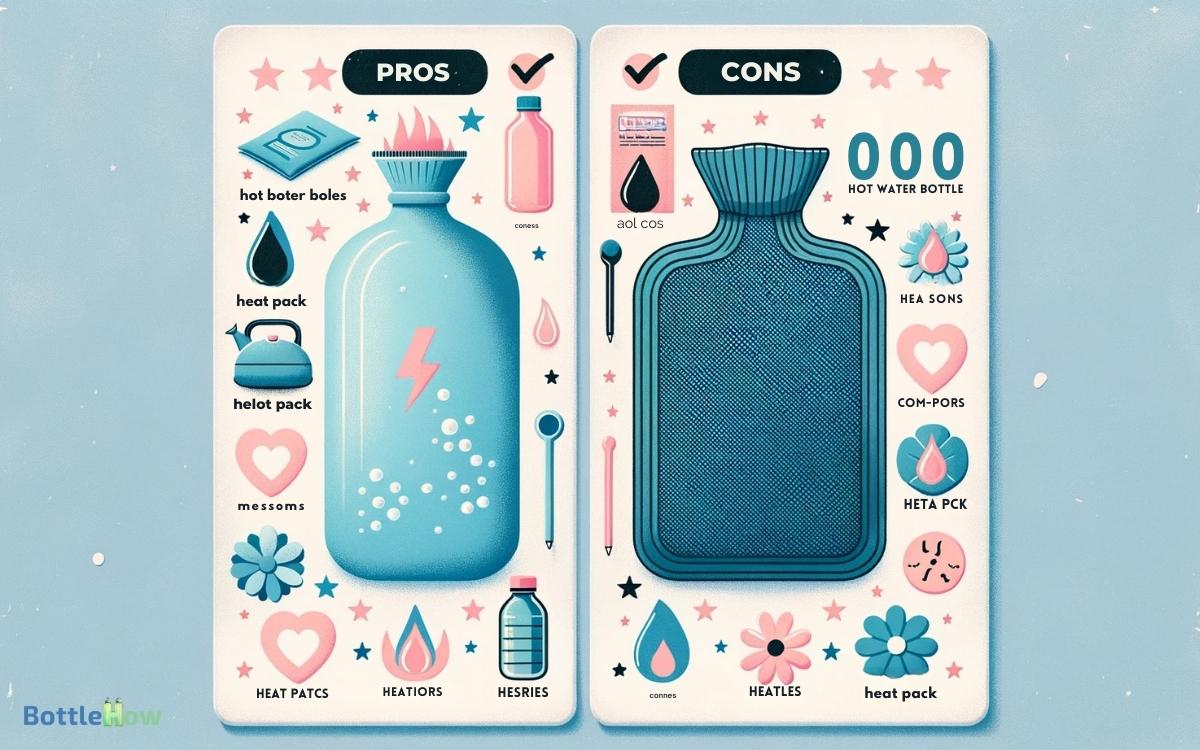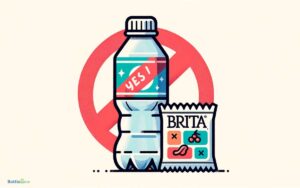Hot Water Bottle Vs Heat Pack: Which One Better!
When choosing between a hot water bottle and a heat pack, consider heating efficiency, ease of use, safety, portability, versatility, cost, and environmental impact.
Heat packs provide consistent, prolonged heat and are easier to prepare, requiring just a microwave.
They’re also more portable. Hot water bottles offer precise temperature control but need more careful preparation and handling.
Both options carry burn risks, so follow safety guidelines. Heat packs have a lower environmental impact with natural fillings, but hot water bottles might be more cost-effective long term due to durability. Continue to explore essential aspects for an informed decision.

Key Takeaways
Heating Efficiency
When evaluating heating efficiency, you’ll find that heat packs generally provide a more consistent and prolonged heat output compared to hot water bottles.
Heat packs often utilize materials like sodium acetate or gels that undergo exothermic reactions, ensuring a steady release of thermal energy.
Conversely, hot water bottles rely on the thermal retention properties of water, which cools down quicker over time.
Clinical studies indicate that the temperature curve of heat packs remains more stable, maintaining therapeutic warmth longer.
This prolonged heat retention can be vital for applications requiring sustained thermal therapy, such as muscle relaxation or chronic pain management.
If your primary concern is consistent heat delivery, heat packs outperform hot water bottles in clinical efficacy and reliability.
Ease of Use
When considering ease of use, you should evaluate the preparation and setup required for both hot water bottles and heat packs.
Hot water bottles necessitate boiling water and careful pouring, while heat packs often only need microwaving.
Additionally, assess portability and storage; heat packs are generally more compact and easier to transport than hot water bottles.
Preparation and Setup
Both hot water bottles and heat packs offer distinct preparation and setup processes that influence their ease of use.
For a hot water bottle, you need to heat water to a safe temperature and carefully pour it into the bottle, ensuring no spillage. This process requires access to hot water and can pose burn risks if not handled properly.
On the other hand, heat packs typically require either microwave heating or activation through a chemical reaction.
Microwaveable heat packs demand precise timing to avoid overheating, whereas chemically activated packs often require manual manipulation to initiate heat.
Each method has its advantages and drawbacks, impacting the overall convenience and safety. Understanding these differences helps you choose the most suitable option for your needs.
Portability and Storage
Hot water bottles and heat packs differ significantly in their portability and storage, impacting their ease of use in various settings.
Heat packs, particularly those with gel or grain fillings, are generally more compact and lightweight, making them easier to transport. You can store them in small spaces, such as drawers or bags, without hassle.
In contrast, hot water bottles require more storage space due to their bulky nature and necessitate access to boiling water for use, limiting their portability. Clinically, heat packs offer a more flexible and convenient option, especially for on-the-go scenarios.
Both options serve therapeutic purposes effectively, but you must consider these factors when choosing the most suitable heat therapy method for your lifestyle.
Safety Considerations
When evaluating safety considerations, you’ll need to assess the risk of burns, the material durability, and the proper usage guidelines of both hot water bottles and heat packs.
Each option carries distinct risks such as potential scalding from hot water or leakage from compromised materials.
Risk of Burns
While hot water bottles and heat packs can provide effective pain relief, they both carry a significant risk of burns if not used properly. You need to be mindful of the potential dangers associated with each.
Hot water bottles can cause burns if the water is too hot or if there’s a leak. Heat packs, especially those microwaved, can overheat and cause skin damage.
To minimize the risk:
- Temperature Control: Be certain water isn’t boiling and heat packs aren’t excessively hot.
- Protective Layers: Use a cloth cover for hot water bottles and avoid direct skin contact.
- Check for Damage: Regularly inspect both items for wear and tear to prevent leaks or overheating.
Material Durability
Ensuring the longevity and safety of both hot water bottles and heat packs largely depends on the materials they’re made from.
Hot water bottles typically consist of rubber or thermoplastic, which can degrade over time, increasing the risk of leaks and burns. Regularly inspect these bottles for signs of wear like cracks or thinning.
Heat packs, often filled with materials such as gel, grains, or clay, also require scrutiny. Gel packs can rupture, and grains can harbor mold if improperly stored. Always check heat packs for any damage or unusual odors before use.
Both items should adhere to safety standards, ensuring they’re free from harmful chemicals. By understanding these material considerations, you can make an informed choice that prioritizes safety and durability.
Proper Usage Guidelines
To minimize the risk of burns and injuries, always follow the manufacturer’s instructions when using hot water bottles and heat packs. Proper usage is critical in guaranteeing safety and efficacy.
For hot water bottles, avoid boiling water; instead, use hot tap water to prevent material degradation and potential leaks.
When dealing with heat packs, make sure they’re evenly heated, as uneven heating can cause hotspots that may burn your skin.
Inspect regularly: Check for wear and tear before each use.
Limit duration: Apply heat for a maximum of 20 minutes to prevent skin damage.
Use a barrier: Place a cloth or towel between the heat source and your skin to avoid direct contact.
Portability
How easily you can carry a hot water bottle or heat pack often depends on their respective sizes and materials.
Hot water bottles typically consist of rubber or similar materials and require water, making them heavier and less compact. They may be cumbersome to transport, especially if filled.
Conversely, heat packs, often made from fabric and filled with materials like rice or gel, are generally lighter and more flexible.
These packs can be compacted more efficiently for travel. Additionally, some heat packs are designed for microwave heating, eliminating the need for external water sources.
Thus, if portability is critical, heat packs offer an advantage due to their lightweight nature and ease of transport compared to hot water bottles.
Versatility
Hot water bottles and heat packs each offer distinct advantages when it comes to versatility, depending on your specific needs and usage scenarios. Hot water bottles provide lasting warmth and can be easily refilled, making them ideal for extended use in cold conditions. Heat packs, on the other hand, offer convenience and portability, especially for outdoor activities or travel. When considering products with specialized functions, like a grayl vs lifestraw comparison for water purification, choosing between a hot water bottle and a heat pack similarly depends on individual preferences and situational needs.
A hot water bottle can be used for prolonged heat application and is often favored for its simple, reusable design.
Heat packs, particularly microwaveable ones, provide rapid, targeted heat, making them ideal for acute pain relief.
Key considerations include:
- Temperature control: Hot water bottles allow precise temperature adjustments based on the water’s heat.
- Application areas: Heat packs conform to body contours, making them effective for localized treatment.
- Portability and convenience: Heat packs are generally more portable and don’t require an external heat source.
Understanding these factors helps you choose the right option for your therapeutic needs.
Cost Comparison
When comparing hot water bottles and heat packs, cost becomes an important factor to take into account alongside versatility and functionality.
Hot water bottles typically have a lower initial cost, often priced between $10 and $20. They don’t require any special materials, just access to hot water, which adds minimal ongoing expense.
On the other hand, heat packs, especially electric ones, can be more expensive, ranging from $20 to $50. Additionally, some heat packs require replacement parts or batteries, contributing to long-term costs.
However, reusable microwaveable heat packs offer a cost-effective middle ground, priced similarly to hot water bottles.
Ultimately, evaluating initial investment and ongoing expenses will help you determine which option aligns best with your financial considerations.
Environmental Impact
Evaluating the environmental impact of hot water bottles and heat packs requires analyzing their materials, production processes, and end-of-life disposal.
Hot water bottles are typically made from rubber or thermoplastic, both of which involve energy-intensive manufacturing.
Heat packs often contain synthetic gels or natural materials like seeds or grains, with varying production impacts.
Consider these factors:
- Materials: Rubber and thermoplastic vs. synthetic gels or natural fillings.
- Energy Use: Manufacturing processes for rubber and thermoplastic are more energy-consuming.
- Disposal: Rubber and thermoplastic are less biodegradable compared to natural fillings in heat packs.
You need to weigh these elements to determine which option aligns better with your environmental values. By understanding these factors, you can make a more informed choice.
Conclusion
When deciding between a hot water bottle and a heat pack, remember that a heat pack can reach up to 130°F in just 30 seconds, providing rapid relief.
Both options have their merits, but a heat pack offers superior portability and ease of use. Consider safety and environmental impact when making your choice.
Ultimately, your specific needs and preferences will guide you to the most suitable option for effective and convenient heat therapy.






